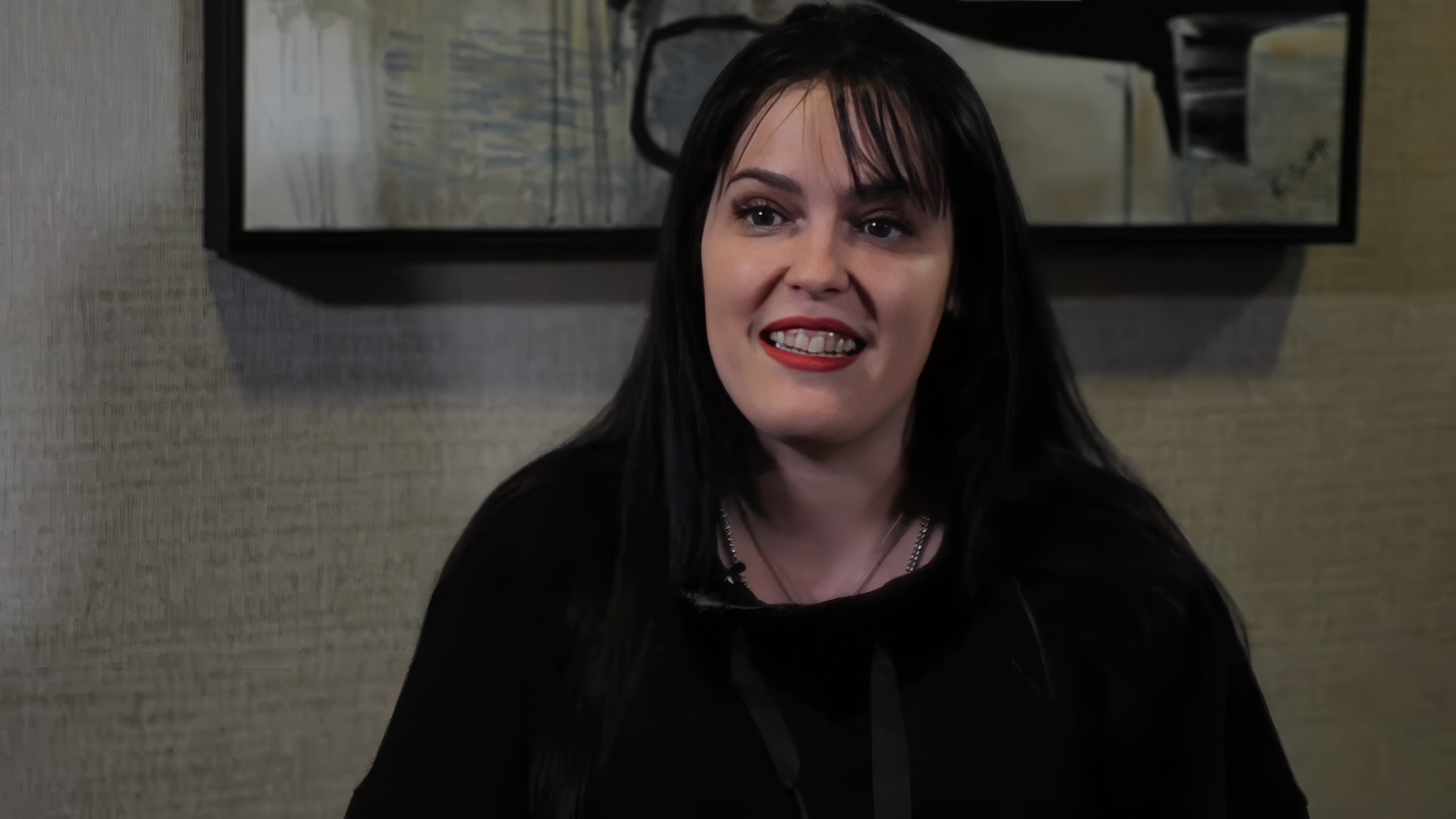Life-Changing Relief from Vertigo
For Simone Wilks of Houston, Texas, the Mind-Eye Institute has truly proved what she calls a “life-changer.”
Within just a few months following her first Mind-Eye appointment in October 2022, “I was off a cane and walking. I was able to talk to people on the phone, shop at stores, go out with friends, look at television and computer screens, and do the kinds of things I thought I would never be able to do again – at least, not for a very long, long time,” says a grateful Simone. She adds she is already about 50 percent back to where she was “as a person doing normal things” before her debilitating vertigo started, even though she has been wearing the Mind-Eye’s therapeutic “brain” contact lenses for only about five months.
The Impact of Vertigo on Daily Function & Family Life
Most importantly, she has been able to return to her business – a barbershop – where she can stand up straight again, cut hair, and banter with her customers for an entire business work day. “The vertigo put me so off-balance; I constantly had the feeling of falling backwards. I had to use a cane or depend on someone else for support. I could only sleep three or four hours a night because I constantly had the falling sensation even while lying down,” she remembers. “At my barbershop, I had to spread my feet to stand, lean one hand and arm on my tray, and use the other hand to try trimming hair. And I could only work a few hours day.”
Her mother, Marisa, agrees. “I watched Simone struggle for months. She walked like a very elderly person, shuffling and all hunched over. Frankly, I do not know how she was at all able to work her business. She could not leave the house socially and interact with groups of people because light, sound, and conversation were too overwhelming for her. We missed many family functions.”
“I watched Simone struggle for months... She could not leave the house socially and interact with groups of people because light, sound, and conversation were too overwhelming."
— Marisa, Simone's Mother
Both Marisa and Simone consider the patient care being performed at the Mind-Eye Institute and by Institute founder and optometrist Deborah Zelinsky OD as “nothing short of miraculous.”
“At my first appointment, Dr. Zelinsky told me, ‘I am going to help you. We are going to get this done,” recalls Simone, saying those words filled her with hope. Marisa adds, “Dr. Zelinsky told us Simone’s brain’s use of her peripheral eyesight is the cause of her symptoms, and that is changeable. What a relief it was to hear that! The Mind-Eye Institute is not only helping the patient, but the patient’s entire family. Dr. Zelinsky is phenomenal. She has a true gift.”
The Connection Between Peripheral Eyesight, Eye-Ear Integration, Brain Function
“Peripheral eyesight is highly utilized in our modernized society of busy traffic, flashing signs, crowded stores, moving displays, and scrolling on computer screens,” Dr. Zelinsky explains. “The Mind-Eye Institute uses advanced optometric methods to assess a patient’s visual processing, including peripheral eyesight and other brain functions, with emphasis on the often-untested linkage between eyes and ears.”
Visual processing enables people to understand and interact appropriately with the world around them. However, if brain circuitry is out of sync because it has been disrupted in any way by trauma or disease or is underdeveloped, people can become confused about their surrounding environment and exhibit inappropriate reactions and responses. If eyes and ears are not integrated, people have to continuously shift attention, and that effort becomes exhausting.
“Eye-ear integration is the concept underlying the clinical work and experience at the Mind-Eye Institute. Our team uses therapeutic lenses, filters, and other optometric interventions to change the way light passes through the retina (which is made of brain tissue and part of the central nervous system), thereby affecting how the brain reacts to information about the environment. Modifying the way in which light strikes the retina oftentimes brings relief and helps patients suffering symptoms of brain injury, stroke, and other neurological diseases or struggling with learning disorders due to underdeveloped visual processing skills,” Dr. Zelinsky says.
Hope, Healing, and the Power of the Mind-Eye Institute
Simone first noticed her vertigo problem during a kickboxing lesson. “I felt as if I were going to fall over. Something seemed wrong.”
That ‘something’ gradually worsened during an 18-month period. “I became sensitive to light and sound, had difficulty looking at bright television and computer screens, developed brain fog, could not participate in conversations, and eventually could not walk without the aid of a cane,” Simone says. “She was literally confined to bed,” her mother states.
“If someone were to ask me to rate the Mind-Eye Institute team from one to 10, I would have to give them 100."
— Simone Wilks
In a desperate search for answers to her daughter’s vertigo, Marisa turned to the Internet. “The Mind-Eye Institute was the first thing that popped up. I checked the [Institute’s] web site, watched the videotaped patient testimonials, and thought ‘this is the answer to our prayers.’” The Wilks talked to a patient advocate at Mind-Eye and secured a quick appointment.
The rest is, well, history.
“If someone were to ask me to rate the Mind-Eye Institute team from one to 10, I would have to give them 100. My prayer is that what Dr. Zelinsky is doing to help others can eventually expand to other optometrists and other eye care practices [throughout the country]. I am telling people the Mind-Eye Institute can change your life,” Marisa says.
Although Simone Wilks reports progressive symptom relief, her experience is not always the norm, nor is it guaranteed for every patient.
More on Mind-Eye & Dizziness/Vertigo
Still dealing with dizziness or vertigo months after a concussion? You’re not alone — and your eyes might be the missing piece.
Many people with lingering balance issues, brain fog, or light sensitivity after a head injury are surprised to learn that the problem may not be in their inner ear, but in how their brain processes visual information — especially from the peripheral visual system. This article explains why traditional treatments often fall short and how addressing visual processing can bring real relief. If you're feeling stuck in your recovery, this could be the breakthrough you need.
Want to Connect?
At the Mind-Eye Institute we understand that interactions between the electrical and biochemical pathways in the brain affect physical, physiological and psychological systems. Visual interventions that alter retinal signaling pathways impact both the electrical and biochemical systems.
To learn about next steps for registering as a patient or registering a child as a patient, please call the Mind-Eye Institute office at 847.558.7817 or you can fill out our online New Patient Inquiry Form provided here.



